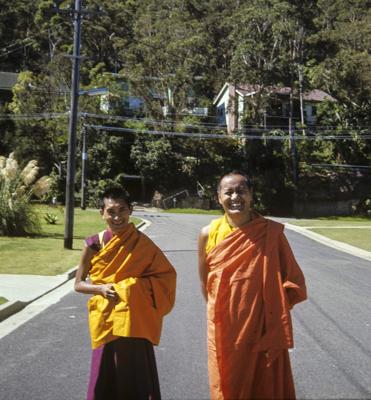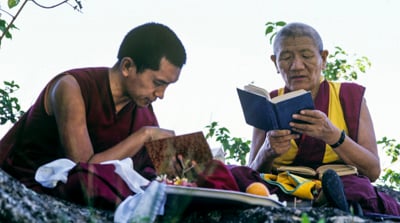Dear Friends,
Thank you for your kind interest in our monthly eletters. Looking back, it's amazing how much we seem to be able to do and it's largely thanks to your kindness and generosity that we can do so. Here at LYWA we are dedicated to making the holy Dharma available to as many people as possible and are so grateful for your support.
Lhabab Duchen—which celebrates Guru Shakyamuni Buddha’s return to Earth from the God Realm of the Thirty-Three after teaching Dharma for several months to the gods—is coming up on November 7 and you'll be hearing from us again before then. According to to the Vinaya text Treasure of Quotations and Logic, this is a merit multiplying day and the karmic results of actions done on this day are multiplied one hundred million times. Therefore it would be a great time to make a contribution to LYWA so that we can continue our work together for the sake of all sentient beings.
Please read on for a sample of what your support allows us to do. Thank you so much.
FROM THE VIDEO ARCHIVE: “Mummy’s coming! Mummy’s coming!”
I felt I had come home and that Lama Yeshe was my guru. He just opened me up completely. I felt balanced and whole, like I was walking on air. I also felt committed. There was no going back.
—Max Mathews aka Mummy Max
Visit and subscribe to the LYWA YouTube channel to view dozens more videos freely available from our archive. See also the FPMT YouTube channel for many more videos of Lama Zopa Rinpoche’s teachings.
On the LYWA Podcast: The Kindness of the Enemy
The minute our anger arises, we find an enemy in our life. We see a person that we hate or we want to hurt, or a person harms us and we see them as an enemy. But the minute our anger is gone, we don’t see them as an enemy.
—Lama Zopa Rinpoche
Rinpoche's extensive teachings on patience have just been published by Wisdom Publications. We highly recommend this book.
The LYWA podcast contains hundreds of hours of audio, each with links to the accompanying lightly edited transcripts. See the LYWA podcast page to search or browse the entire collection by topic or date, and for easy instructions on how to subscribe.
WHAT'S NEW ON OUR WEBSITE
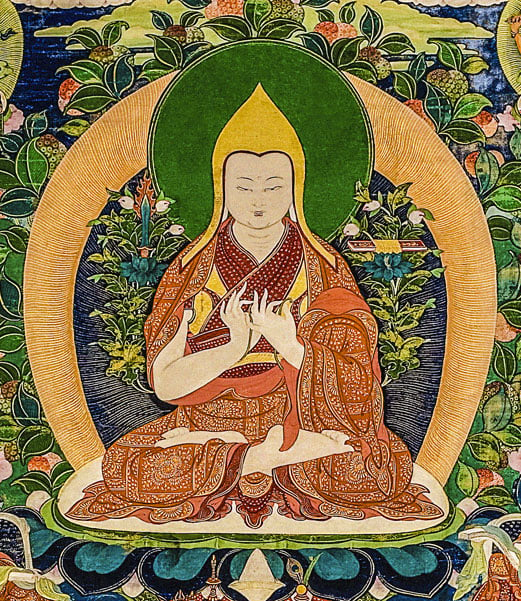 This month we are happy to share with you an updated version of a commentary on Lama Tsongkhapa Guru Yoga (Ganden Lha Gyäma) by Lama Zopa Rinpoche. This commentary is also now available as a PDF file. The teachings were given by Kyabje Lama Zopa Rinpoche at Tushita Meditation Centre, Dharamsala, India, in March 1986. The teachings were edited and assembled in this format by Uldis Balodis, and lightly revised by Sandra Smith in September 2020. Please note: A Highest Yoga Tantra initiation is not required for Ganden Lha Gyäma practice, however, this teaching includes specific instructions suitable for Highest Yoga Tantra initiates. Rinpoche also teaches on general lamrim topics including the preliminary practices, refuge and karma.
This month we are happy to share with you an updated version of a commentary on Lama Tsongkhapa Guru Yoga (Ganden Lha Gyäma) by Lama Zopa Rinpoche. This commentary is also now available as a PDF file. The teachings were given by Kyabje Lama Zopa Rinpoche at Tushita Meditation Centre, Dharamsala, India, in March 1986. The teachings were edited and assembled in this format by Uldis Balodis, and lightly revised by Sandra Smith in September 2020. Please note: A Highest Yoga Tantra initiation is not required for Ganden Lha Gyäma practice, however, this teaching includes specific instructions suitable for Highest Yoga Tantra initiates. Rinpoche also teaches on general lamrim topics including the preliminary practices, refuge and karma.
The Perfect Human Rebirth book by Lama Zopa Rinpoche is now available in Tibetan and Italian. The Tibetan translation of The Perfect Human Rebirth book is available for download as a free PDF, translated by Tenzin Rigsang. This book is also now published by Nalanda Edizioni, an Italian publishing house affiliated with FPMT. The Perfect Human Rebirth is also translated into Russian, French and Chinese. You can find these translations here.
Be sure to visit our Image Gallery to see hundreds of newly published images of Lama Yeshe and Lama Zopa, including many of the images used in Big Love!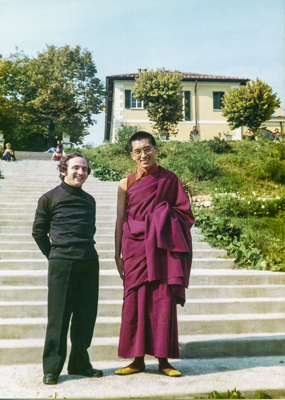 As always, we have new additions to Lama Zopa Rinpoche's Online Advice Book to share with you:
As always, we have new additions to Lama Zopa Rinpoche's Online Advice Book to share with you:
- The Three Principal Aspects of the Path in Business: Rinpoche wrote this letter to a student who was using the three principal aspects of the path as a business model. The three are renunciation, bodhicitta and the right view (of emptiness).
- Animal Liberation and Vajra Armor for Healing: A student who had been diagnosed with cancer wrote to Rinpoche for blessing, support and advice. The student was Catholic but had visited a Dharma center and learned a little about Buddhism. Rinpoche responded with this long letter.
- Everything Comes from the Mind: Rinpoche sent this advice about mind training (lojong) to a family whose son was injured after falling out of a window.
- Actualizing Lamrim While Working for the Center: A student requested guidance and asked Rinpoche whether they should focus on work, study or retreat.
You can always find a list of all the newly posted advices from Lama Zopa Rinpoche on our website.
Thank you again for your kind interest and support. The incredible Big Love: The Life and Teachings of Lama Yeshe continues to wow people! See what they're saying. And next month we'll have more news about our latest book, How to Enjoy Life Liberated from the Inner Prison.
Big love,

Nick Ribush
Director
THIS MONTH'S TEACHING: practice rejoicing
Lama Tsongkhapa said:
The virtuous action which requires little effort but with which we are able to accumulate great merit is rejoicing.
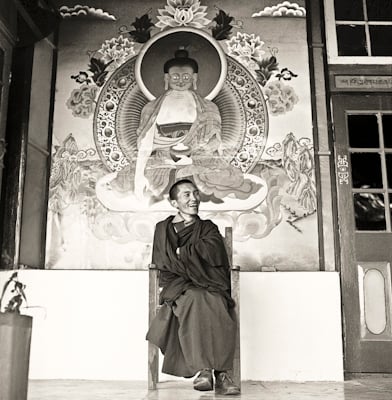 Rejoicing is a virtue that we can practice with the mind alone without the need for any particular activity of the body or speech—while we are walking down the road, while we are talking, while we are eating, while we are lying down at the beach! It needs no particular activities or great effort, and if practiced it accumulates infinite merit. One king asked the Buddha, “I have to work for the populace so I have no time to study or meditate and so on; is there any suitable practice that I can do?” Buddha gave the king these three practices: rejoicing, bodhicitta and dedication. As these are just mental activities the king was able to accumulate unbelievable merit in a very short time.
Rejoicing is a virtue that we can practice with the mind alone without the need for any particular activity of the body or speech—while we are walking down the road, while we are talking, while we are eating, while we are lying down at the beach! It needs no particular activities or great effort, and if practiced it accumulates infinite merit. One king asked the Buddha, “I have to work for the populace so I have no time to study or meditate and so on; is there any suitable practice that I can do?” Buddha gave the king these three practices: rejoicing, bodhicitta and dedication. As these are just mental activities the king was able to accumulate unbelievable merit in a very short time.
Through feeling happy about your own three times’ merit, the merit increases greatly. By practicing rejoicing in other sentient beings who have a lower level of mind, less realizations than yourself, you receive more merit than the other person who put the effort into accumulating it. Then, if the other person has a higher level of mind than you, you gain merit equal to half the merit you are rejoicing in. For example, Pabongkha Dechen Nyingpo in his notes on lamrim said one of his root gurus, Dagpo Rinpoche, said:
If you are not a bodhisattva, by rejoicing for just a second at the merit accumulated by a bodhisattva in one day you receive the equivalent of half that amount of merit. To accumulate that merit without practicing rejoicing requires being born as a human being and accumulating merit for fifteen thousand years.
This gives you an idea of the incredible length of time it takes to accumulate such merit. Rejoicing is thinking something like, “How wonderful it is that this bodhisattva accumulated this merit in one day.” Now, this is in regard to one bodhisattva, but there are numberless bodhisattvas, so you can rejoice in the merit they all accumulate in one day. This is without considering each bodhisattva’s three times’ merit—that created by them in the past, present and future.
When practicing rejoicing, first rejoice at your own three times’ merit. Just as a mother in a poor family would feel so happy if her beloved child found a diamond or a thousand rupees or something in the garbage. Or like parents who feel happy when their children find a good job or get a certificate or degree. Then rejoice at all sentient beings’ three times’ merits and at the temporal and ultimate happiness that will result. And then at the bodhisattvas’ three times’ merits, and all the incredible results of temporal and ultimate happiness. Then at all the buddhas’ merits. Being aware of this think, “How wonderful it is!”
Generating happiness is the means of practicing rejoicing. This is a bodhisattva’s action. Not only at a time when you are practicing the seven limbs specifically, this can be practiced in everyday life, whenever you see other sentient beings enjoying good things; whenever you hear about other people having had a good retreat, having had a good time, much experience; when you see that other people have more Dharma knowledge than you; even at others having a good body and wealth and whatever good things they have. Feel happiness in your heart all the time: “How good it is!” Even about the helpers around you—about any good thing you see others having. Just as a mother feels happy about her children when they do something good or when they get something valuable. Then jealousy or the other disturbing thoughts which make you unhappy will not arise.
This teaching is an excerpt from Chapter 10: Ganden Lha Gyäma: Part 2 from the Lama Tsongkhapa Guru Yoga (Ganden Lha Gyäma) commentary given by Lama Zopa Rinpoche at Tushita Meditation Centre, Dharamsala, India at the end of the Second Enlightened Experience Celebration held in March 1986. You can find this excerpt and the whole commentary here on our website.
























